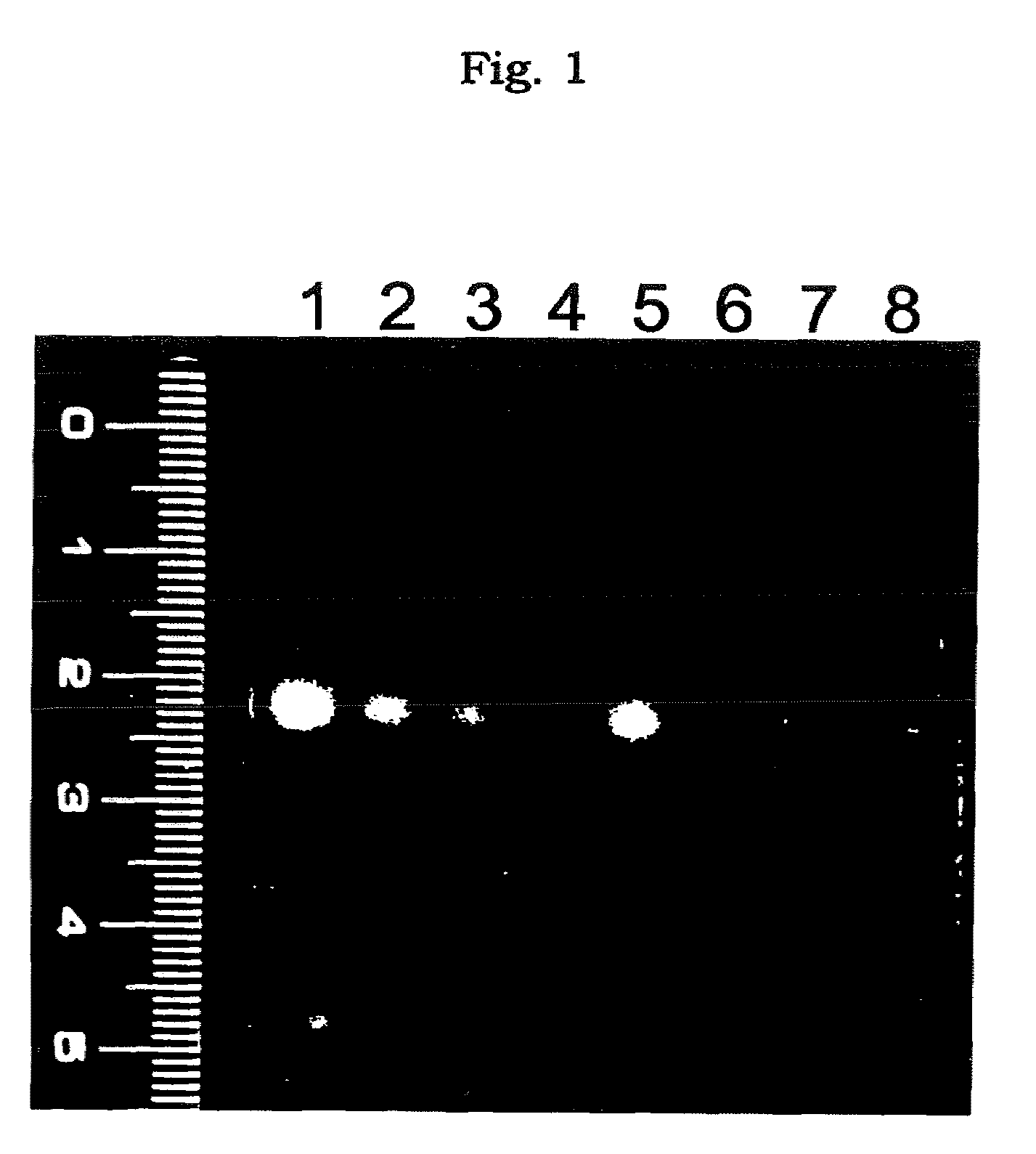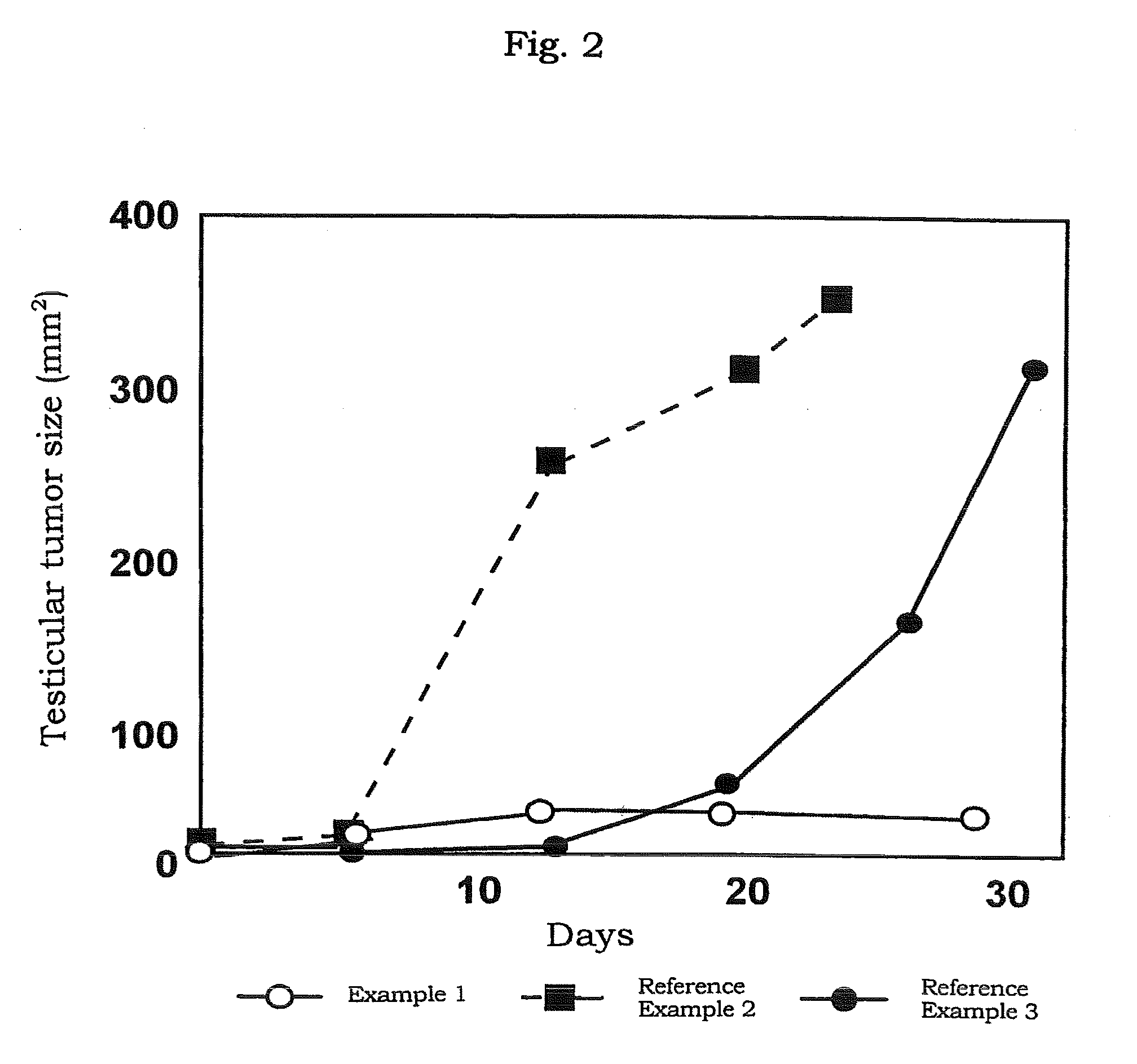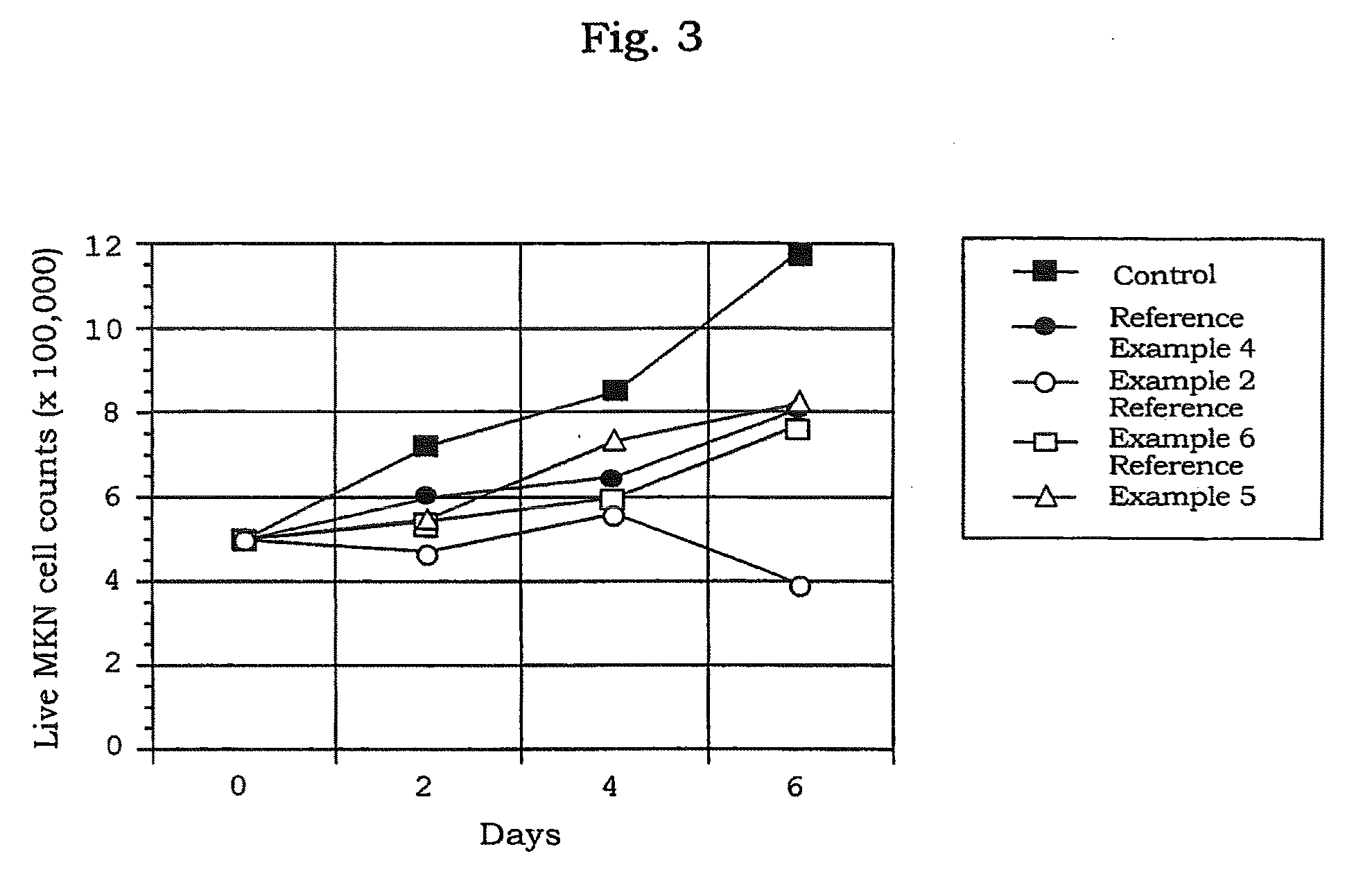Oligonucleotides-transferring preparations
a technology of oligonucleotides and preparations, which is applied in the direction of non-active genetic ingredients, drug compositions, genetic material ingredients, etc., can solve the problems of not being practicably used, failing to completely satisfy the requirements of anti-sense therapy, and difficulty in transferring negatively charged oligonucleotides through cell membranes, etc., to inhibit the expression of the target m-rna
- Summary
- Abstract
- Description
- Claims
- Application Information
AI Technical Summary
Benefits of technology
Problems solved by technology
Method used
Image
Examples
example 1
[0077]The preparation in a solution form for transferring an oligonucleotide which comprises atelocollagen at the final concentration of 0.5%, was prepared by mixing the phosphorothioate antisense oligonucleotide (5′-CTCGTAGGCGTTGTAGTTGT-3′ (SEQ ID NO:1); molecular weight, about 6,500) (manufactured by Sawaday) having a sequence complementary to a sequence from 4196 bp to 4216 bp of the fibroblast growth factor HST-1 (FGF4) gene (described in Proc. Natl. Acad. Sci. USA, 84, 2890-2984 (1987)) with a neutral solution of atelocollagen (atelocollagen implant manufactured by KOKEN CO., LTD.; 2% atelocollagen solution) to be the final concentration to 10 μmol / L.
example 2
[0078]The preparation in a solution form for transferring an oligonucleotide was prepared by mixing the phosphorothioate type antisense oligonucleotide (AS-ODC, 5′-TCATGATTTCTTGATGTTCC-3′ (SEQ ID NO: 2) manufactured by ESPEC OLICO SERVICE CORP.) having a sequence complementary to a sequence from 319 bp to 338 bp in the ornithine decarboxylase gene with a neutral solution of atelocollagen (atelocollagen implant manufactured by KOKEN CO., LTD.; 3.5 w / w % atelocollagen solution; the final concentration, 1.75 w / w %) to bring the final concentration of the oligonucleotide to 0.5, 1.5, 2, 2.5 mmol / L.
example 3
[0079]The preparation for transferring an oligonucleotide which contains a liposome was prepared by mixing AS-ODC with 0.5 μL of a neutral solution of atelocollagen (atelocollagen implant manufactured by KOKEN CO., LTD.; 3.5 w / w % atelocollagen solution; final concentration, 1.75 wt %) and 1.5 μL of Transfast (Promega) to bring the final concentration of the oligonucleotide to 1.0 mmol / L.
PUM
| Property | Measurement | Unit |
|---|---|---|
| molecular weight | aaaaa | aaaaa |
| pH | aaaaa | aaaaa |
| pore size | aaaaa | aaaaa |
Abstract
Description
Claims
Application Information
 Login to View More
Login to View More - R&D
- Intellectual Property
- Life Sciences
- Materials
- Tech Scout
- Unparalleled Data Quality
- Higher Quality Content
- 60% Fewer Hallucinations
Browse by: Latest US Patents, China's latest patents, Technical Efficacy Thesaurus, Application Domain, Technology Topic, Popular Technical Reports.
© 2025 PatSnap. All rights reserved.Legal|Privacy policy|Modern Slavery Act Transparency Statement|Sitemap|About US| Contact US: help@patsnap.com



